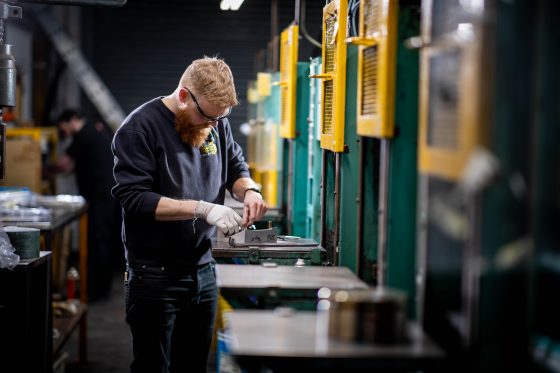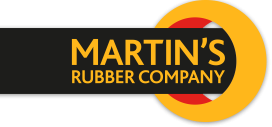What is the difference between injection moulding and compression moulding?
Posted on 27/01/2020 Category: Rubber moulding

Many commercial and specialist rubber products are developed through a process known as rubber moulding. There are several different techniques but in this case we will be focussing on compression and injection moulding. Read on for our complete guide to rubber injection moulding and rubber compression moulding, including how these techniques work and their main advantages and disadvantages.
What is rubber compression moulding?
Compression moulding is the oldest, simplest and often the most economical method of manufacturing a rubber product. Developed as far back as the 1850s, compression moulding is the original method of moulding rubber and is just as relevant today for manufacturing low to medium volumes of rubber products.
How does compression moulding work?
Compression moulding works by combining heat and pressure to mould rubber into a shape. The rubber is shaped using a heated mould tool and the clamping pressure of a press. Chemical changes to the rubber, known as the curing or vulcanisation process, occur before cooling and the extraction of the final part.
Compression moulding advantages and disadvantages
As with any manufacturing process, there are advantages and disadvantages to compression moulding. We have listed the main ones below to give you a clearer idea of what you can expect from this technique.
Advantages of compression moulding
The advantages of compression moulding include:
- Short set up time.
- Least amount of waste.
- Ideal for parts with a very large cross section.
- Capacity to process stiff, high durometer materials.
- Excellent for low quantities of parts requiring a long cure time.
- Tooling is simpler and more cost-effective than injection moulding.
Disadvantages of compression moulding
The disadvantages of compression moulding include:
- Parts can be less consistent.
- Coloured rubber can be easily contaminated.
- Longer cure times due to slow heat transfer through the rubber.
What is rubber Injection moulding?
Injection moulding was created as an extension of the plastics industry in the early 1960s. This manufacturing process involves injecting material into a closed mould and can be performed with a variety of materials, including plastics, metals, glasses, and thermoset elastomers and polymers.
How does injection moulding work?
Injection moulding works by feeding the desired material into a heated barrel, where it is mixed and forced into a mould cavity where it cures and hardens into shape. Moulds are usually constructed from steel or aluminium to form the features of the part. In many cases, this is the most efficient way to mould rubber.
Injection moulding advantages and disadvantages
Again, injection moulding comes with its own unique set of pros and cons. Here are the main advantages and disadvantages of choosing injection moulding.
Advantages of injection moulding
The advantages of injection moulding include:
- Lower unit costs.
- Faster cycle times.
- Low levels of flash.
- Little scrap/waste.
- High dimensional tolerances.
- Reduced need for secondary trimming.
Disadvantages of injection moulding
The disadvantages of injection moulding include:
- Higher set-up costs.
- Small runs of parts can be costly.
- More expensive machinery and tooling.
Compression moulding vs injection moulding
Ultimately, the choice of whether to opt for rubber compression moulding or injection moulding largely boils down to cost, volume and time pressures. Neither technique is better than the other per se, it entirely depends on the requirements of your product and application. Our highly experienced experts here at Martin’s Rubber will assess your needs and recommend the most applicable technique for your goals.
Speak to a Martin’s Rubber technical expert today for guidance about the best rubber moulding technique for your rubber products on +44 (0) 23 8022 6330 or email [email protected].


